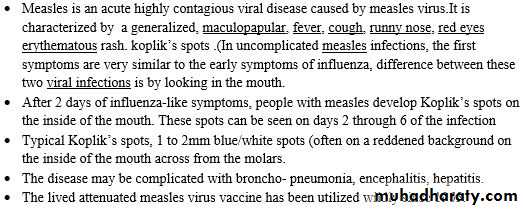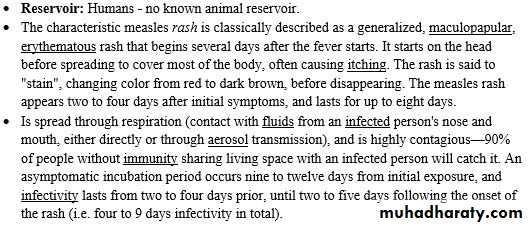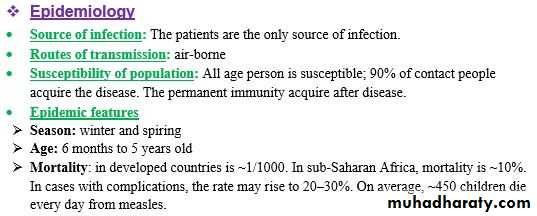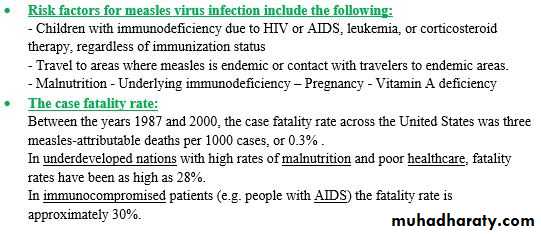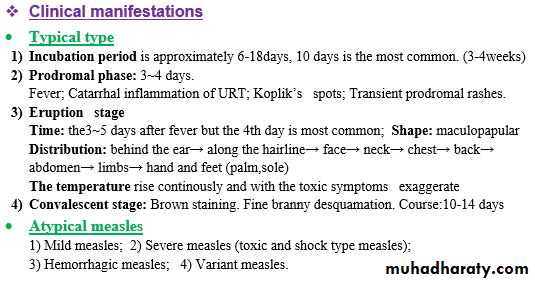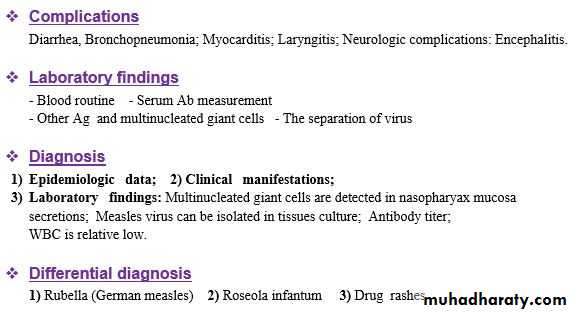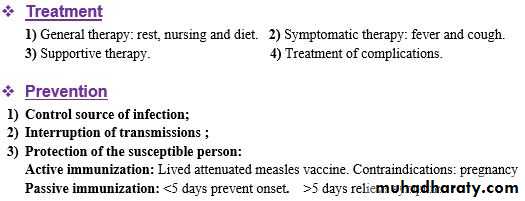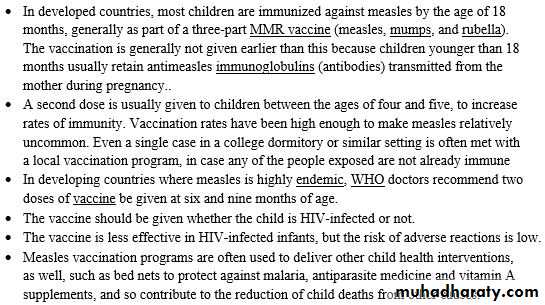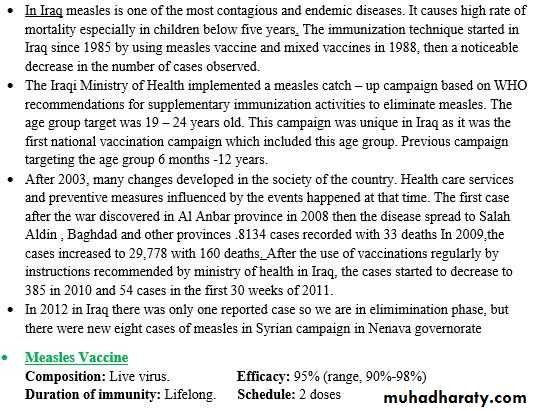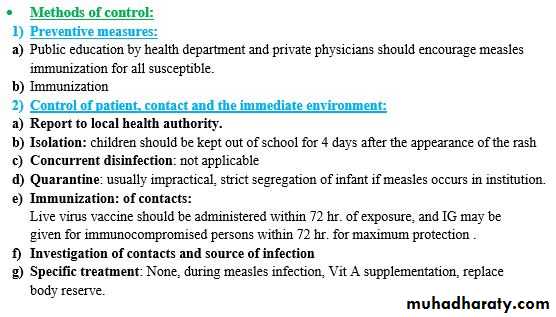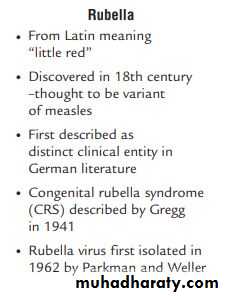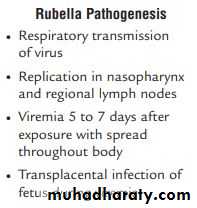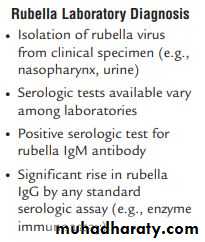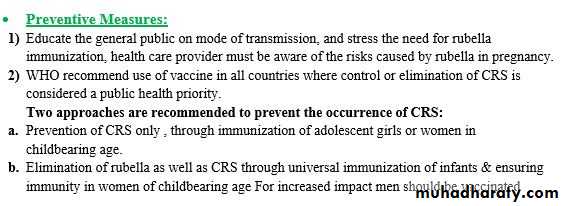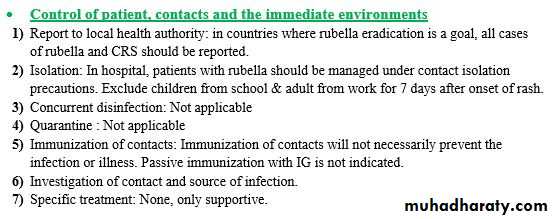Epidemiology of viral infections
Lecture-2- 4th stageDept. of Family & Community medicine
By Dr. Muslim Nahi Saeed \Ph. D Family medicine
Monday, December 21st ,2020
Measles
Even in countries where vaccination has been introduced, rates may remain high.
Globally, measles fell 60% from an estimated 873,000 deaths in 1999 to 345,000 in 2005.. Estimates for 2008 indicate deaths fell further to 164,000 globally, with 77% of the remaining measles deaths in 2008 occurring within the Southeast Asian region In Iraq measles cases 1121 all over the countryEpidemiology
-OccurrenceRubella occurs worldwide.
-Reservoir
Rubella is a human disease. There is no known animal reservoir. Although infants with CRS may shed rubella virus for an extended period, a true carrier state has not been described.
-Transmission
Rubella is spread from person to person via droplets shed
from the respiratory secretions of infected persons. There is
no evidence of insect transmission.
-Rubella may be transmitted by persons with subclinical or asymptomatic cases (up to 50% of all rubella virus infections).
-Temporal Pattern
In temperate areas, incidence is usually highest in late winter and early spring.-Communicability
Rubella is only moderately contagious. The disease is most contagious when the rash first appears, but virus may be shed from 7 days before to 5–7 days or more after rash onset.
-Infants with CRS shed large quantities of virus from body secretions for up to 1 year and can therefore transmit rubella to persons caring for them who are susceptible to the disease.
Clinical Features
Acquired RubellaThe incubation period of rubella is 14 days, with a range of 12 to 23 days. Symptoms are often mild, and up to 50% of infections may be subclinical or in-apparent.
In children, rash is usually the first manifestation and a prodrome is rare.
In older children and adults, there is often a 1 to 5 day prodrome with low-grade fever, malaise, lymphadenopathy, and upper respiratory symptoms preceding the rash.
The rash of rubella is maculopapular and occurs 14 to 17 days after exposure.
Clinical Features cont.
The rash usually occurs initially on the face and then progresses from head to foot.
It lasts about 3 days and is occasionally pruritic. The rash is fainter than
measles rash and does not coalesce.
The rash is often more prominent after a hot shower or bath. Lymphadenopathy may begin a week before the rash and last several weeks.
Post-auricular, posterior cervical, and sub-occipital nodes are
commonly involved.
Clinical Features cont.
Arthralgia and arthritis occur so frequently in adults that they are considered by many to be an integral part ofthe illness rather than a complication.
Other symptoms of rubella include conjunctivitis,testalgia, or orchitis.
Complications: Complications of rubella are not common, but they generally occur more often in adults than in children.
-Arthralgia or arthritis may occur in up to 70% of adult women who contract rubella, but it is rare in children and adult males.
Joint symptoms tend to occur about the same time or shortly after appearance of the rash and may last for up to 1 month; chronic arthritis is rare.
-Encephalitis occurs in one in 6,000 cases, more frequently in adults (especially in females) than in children.
-Hemorrhagic manifestations occur in approximately one per 3,000 cases, occurring more often in children than in adults.
-Additional complications include orchitis, neuritis, and a rare late syndrome of progressive pan-encephalitis.
Congenital Rubella Syndrome
Infection with rubella virus is most severe in early gestation.
The virus may affect all organs and cause a variety of congenital defects. Infection may lead to fetal death, spontaneous abortion, or preterm delivery. The severity of the effects of rubella virus on the fetus depends largely on
the time of gestation at which infection occurs.
85% of infants infected in the first trimester of pregnancy will be found to be affected if followed after birth.
Defects are rare when infection occurs after the 20th week of gestation.
The overall risk of defects during the third trimester is probably no greater than that associated with uncomplicated pregnancies.

